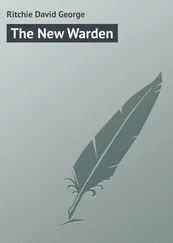Ten thousand years ago, pollen deposits were being laid down in a raised bog near Littleton, Co. Tipperary, starting an important historical archive and providing one of the most important chronologies of vegetational development in Ireland from 10,000 years ago to the present time. 19It tells the story of rich meadows of grasses, docks and meadowsweet which were quickly replaced by a juniper scrub mixed with willow trees. These low-growing species were subsequently overtaken by the taller downy birch forming the first real woodlands. Hazel then established itself with a patchy distribution of sometimes quite dense stands, while Scots pine also started expanding from about 9,000–8,500 years ago to produce a pine-hazel wooded landscape.
The oak first put in an appearance around 9,000 years ago and quickly expanded its range together with the wych elm to form a high forest. As a result of this woodland expansion, the pine was pushed off the better Midland soils onto the poorer regions of the west. Alder also extended its cover but remained confined to the wetter areas, while the drier limestone soils attracted the ash. By then yew was already in Ireland.

Schematic pollen-diagram to illustrate the early development of the Littletonian woodlands in Ireland. From Mitchell & Ryan 2.
The deciduous woodland climax phase, dominated by a high forest of hazel-oak-elm-alder lasted for almost 2,000 years between 7,000 and 5,100 years ago. With the onset of wetter climatic conditions, alder had spread considerably and joined the dense forest of oaks and elms. Pine was very much restricted to the poorer soils of the west or other upland areas where birch was also competing for some ground.
These were the finest years of Ireland’s woodlands. Vast areas of the country were covered by a continuous mantle of trees. It was the time of the proverbial tree top walking squirrels, which travelled the length of Ireland from Malin Head, Co. Donegal, to Cape Clear, Co. Cork, without touching the ground.
Many trees such as the limes, hornbeam, beech, service, all the elms except wych elm, the field maple and the sycamore failed to reach Ireland and become established as native species. The black poplar, together with the grey poplar, was formerly considered by Praeger to be rare and an introduced species. 20However, recent surveys, initiated by the Botanical Society of the British Isles, have discovered large numbers of black poplar on the River Shannon system as far north as Lough Allen, Co. Leitrim, and in the damp plains that form the headwaters of the Rivers Liffey, Co. Wicklow, and Barrow, Co. Laois, which are thought to be remnants of native woodlands. The population is reported to have a well-balanced age structure and is regenerating, especially on the shore of Loughs Allen and Ree. There is a young population on the east shore of Lough Allen which is thought to be unique. 21Slightly over half of all the trees examined had smooth trunks and lower branches, without bosses, or burrs – a feature distinguishing the Irish population from that growing in England where only 0.3% are without bosses. 22
All except the sycamore managed to set foot in Britain where, however, they remained restricted to the south and east. Limes, hornbeam, beech, service, all the elms except wych elm, the field maple and the sycamore were subsequently introduced to Ireland by man. Beech and sycamore perhaps arrived with the Normans during the twelfth century – although archaeologists have identified fragments of beech dating from a period between AD 600 and 1000, possibly imported – while lime species and hornbeam only came in the seventeenth or eighteenth centuries. Despite their non-native pedigree, both beech and sycamore have adapted and flourished in Ireland as if they were native. On the other hand, Ireland can claim one native tree that is missing from Britain, the strawberry-tree. This belongs to a small group of so-called Mediterranean-Atlantic species and is found in Portugal, northern Spain and western France but not in Britain, probably because it travelled up the western European coast and bypassed Britain.
When the woodland reached its zenith about 5,250 years ago, elm was the commonest tree on the good soils in the drier areas of the Midlands and eastern Ireland. 23Hazel, formerly common all over the country, was now concentrated in the north-central areas while pine was most abundant along the western seaboard. This woodland tranquillity was, however, to be interrupted by a dramatic decline in the production of elm pollen some 5,100 years ago. Debate has raged as to the causes of this phenomenon: was it man-induced or the result of natural causes? Mitchell & Ryan put it down to a disease – a fungal pathogen Ceratocystis ulmi (Dutch elm fungus) – a situation re-enacted this century with devastating consequences. While no figures are available for Ireland, over 90% of the British elms died, involving an estimated 25 million trees, during the late 1960s and 1970s.
Early plantations of beech woodlands.
The decline of the elm followed soon after the arrival of the first Neolithic farmers about 6,000 years ago, together with their cereal crops and domestic animals. They landed on the shores of Ireland with polished stone axes that had sharp cutting edges and they opened up the first woodland clearances by chopping down the trees, as well as killing them by ring-barking, in order to grow crops. The natural collapse of elm must have come as a gift to them for they did not have to exert so much effort to get at the good soil. The forests were progressively reduced over the next 1,500 years and replaced by extensive grassland and heathland. This commitment to tree cutting and removal was intensified as new waves of Neolithic immigrants arrived, later followed by the Celtic invasions, the Vikings, the Normans and then the English planters. All of them took a bite at the woods, which were soon cleared for purposes other than agriculture, such as charcoal production for the smelting of iron ore, the construction of ships, barrels and houses and the curing and preservation of cattle hides with tannins derived from oak bark. All this went on with such vigour that by the end of the Tudor period, virtually all of Ireland’s native woodlands had been reduced to a miserable rag bag of scrappy and uneconomic patches in steep and rocky places that were not attractive for agriculture or any other purpose. The grass pollen that was now swirling in the air was deposited in lake water where it descended into soft mud sediments to remain unaltered. Ireland’s new grasslands – visible under the microscope today – had arrived. Today, grassland dominates, accounting for 93% of all the land used for agricultural purposes.
The early fauna of Ireland and cave explorations
Towards the end of the nineteenth century, a small and enthusiastic band of Irish naturalists led by the ornithologist Richard John Ussher was deeply preoccupied with the exploration of caves which they thought must contain the bones of animals, and possibly early man, that once roamed through and flew over the Irish landscape. The caves in the limestone areas of Ireland were probed and excavated with such dedication and energy that the movement could almost have been dubbed the ‘Victorian bone craze’. The hard core cave naturalists included Praeger, Scharff and Ussher. Their publications on the findings from Kesh, Co. Sligo, Castlepook, Co. Cork, and at several sites in Clare are a source of endless fascination. 24,25,26They were quick to realise that the bones provided incontrovertible evidence of the prehistoric fauna. But the circumstances in which the deposition of bones had occurred clearly varied. Some animals adopted the caves as their homes while others occasionally sought refuge there. Many bones were the remnants of prey dragged into the caves by the larger carnivores such as spotted hyenas, bears and wolves.
Читать дальше













